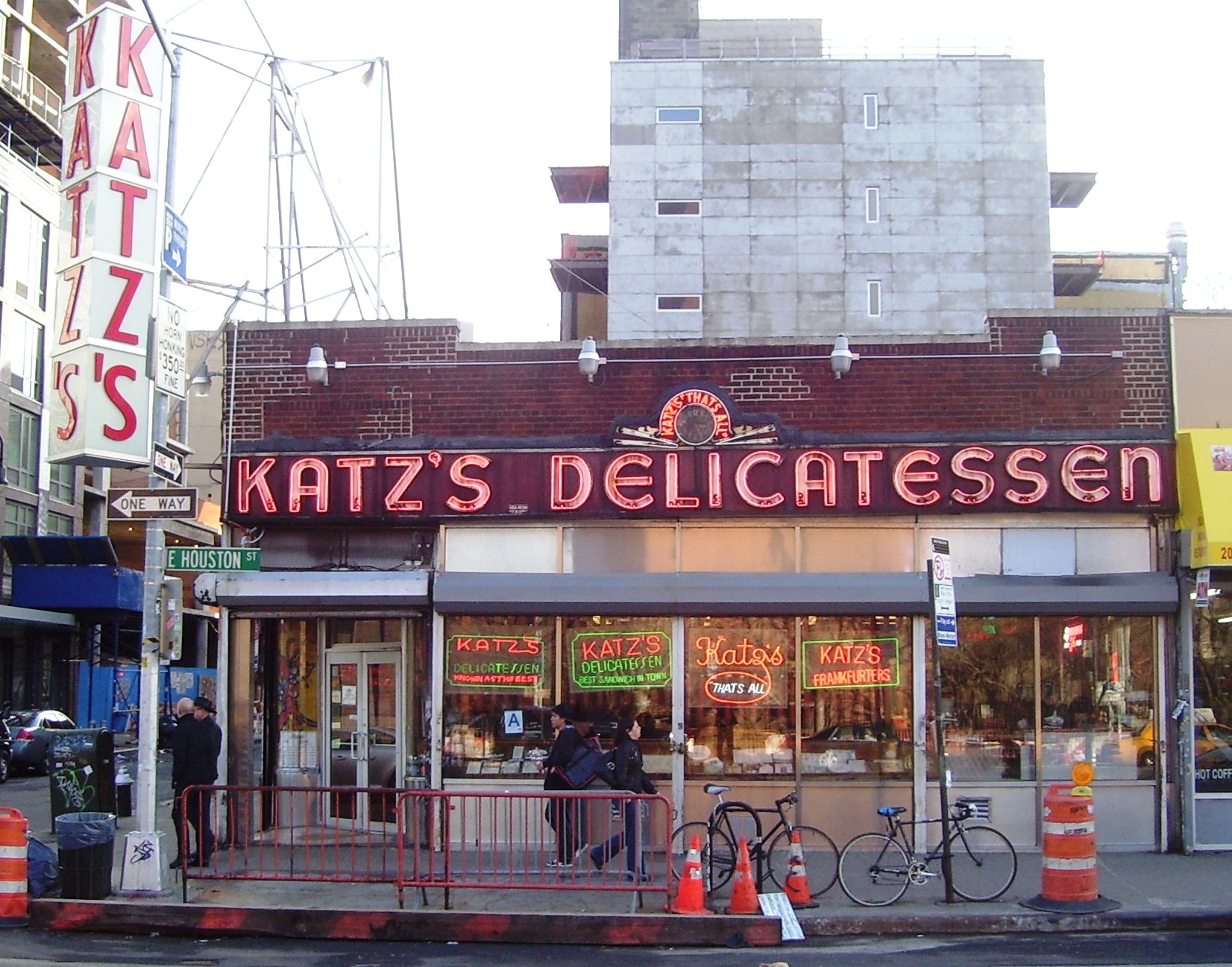—Ted Merwin
When I was growing up on Long Island in the 1970s, school field trips meant being schlepped on a bus to the McGraw-Hill building on Sixth Avenue, to a multimedia film called the “New York Experience,” in which a kaleidoscopic montage of New Yorkers of different stripes celebrated both past and present life in Gotham. Nowadays, all one needs to do to get a sense of the real New York is to pay a visit to Katz’s Deli on Houston Street, where a prickly, pickle-y, briny Yiddish gestalt holds imperious sway in a churning sea of multi-racial, multi-ethnic customers and counter people.
And so “The Ur-Deli,” Jordan Weissman’s recent piece in Slate on how Katz’s stays afloat despite charging $20 for a pastrami sandwich, while it ably limns the economic factors that have raised the price of beef (even beef of the non-kosher variety, which Katz’s retails), only hints at what makes Katz’s emblematic of Jewish life in New York. Katz’s is what the peerless French Jewish scholar Pierre Nora would call a lieu de memoire, a place in which Jewish memory itself is staged and constructed—a place in which every neon sign seems to light up a kind of historic Jewish body electric for the benefit of all New Yorkers. Indeed, there is something Whitmanesque about Katz’s, peopled, often around the clock, by a jostling crowd of cab drivers, tourists, politicians and businesspeople. (Of course, if Whitman had ever been to Katz’s, he would have called his magnum opus “Slices of Pastrami” instead of “Leaves of Grass.”)
We may never know which Jewish delicatessen was the first to open in New York; the deli–from the Latin word delicatus, meaning anything that was alluring, enticing, or voluptuous–morphed in successive stages out of the gourmet take-out stores of Europe, only gradually sprouting tables at the turn of the twentieth century and becoming a particularly relaxed and raucous type of restaurant that brought together Jewish immigrants from different Eastern European nations and enabled them to begin to form a collective American Jewish identity while fressing on smoked and pickled meats, crunchy cucumbers, and spongy, slightly sour, seeded rye bread.
But Katz’s, which opened in 1888 as Iceland Brothers (the brothers were bought out by Willy Katz in 1910, at the peak of Jewish immigration), was certainly one of the pioneers. Its survival is remarkable, given how many similar establishments went in and out of business on the Lower East Side in those years, and how challenging the restaurant business remains to this day. It has profited hugely from the tens of thousands of visitors who descend on the Lower East Side each year seeking to experience, or at the very least to imagine, what life was like in New York more than a century ago.
True, what cemented Katz’s in the popular imagination is its role in the 1989 Rob Reiner comedy film, When Harry Met Sally, in which Meg Ryan’s vociferous “orgasm” articulated the whole “let it all hang out” ethos of Jewish culture (one summed up, perhaps, equally well by the pendulous salamis hanging behind the deli counter). It was—as another non-Jew, Henry James, called it in his (admittedly highly prejudiced) 1905 survey of the Lower East Side—a “Jewry that had burst all bounds.” This is what Katz’s sells: the celebration of excess, the drive to overturn limits, the claiming of one’s irrepressible due.
Katz’s may thus be not just the most “New York” restaurant there is, but the most American and most democratic one. A flash mob last year recreated the notorious scene from the Reiner film in Katz’s with dozens of (seemingly) non-Jewish women simultaneously reaching “climax” in unison, thrusting the deli even more to the pinnacle of American popular culture. As Katz’s has become ever more a destination restaurant, the little carnival ticket that one uses to purchase one’s food gains entry not just to an eatery but to a buoyant, beguiling and boisterous show. For such a bonanza, $20 seems like a true Lower East Side bargain.
Ted Merwin is Associate Professor of Religion & Judaic Studies and Director of the Milton B. Asbell Center for Jewish Life at Dickinson College (Carlisle, Pa). He is the author of Pastrami on Rye: A History of the Jewish Deli (forthcoming in 2015 from NYU Press). For more information, visit his website: http://www.tedmerwin.com/.

